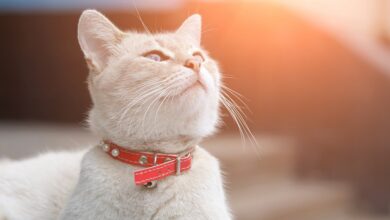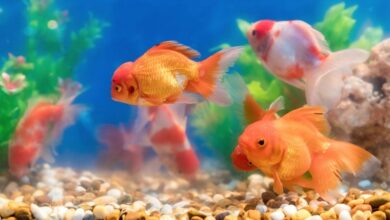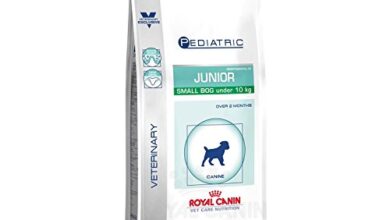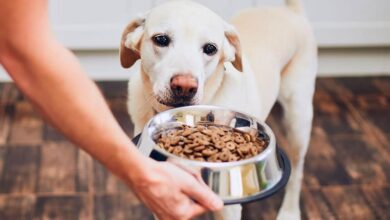hypoallergenic dog breeds

Canines usually have some allergens made up of a special protein that, when in contact with humans, can cause a series of respiratory and even skin allergies. However, it is a condition that can be easily prevented by choosing to have a hypoallergenic breed of dog at home.
There are many people who should refrain from having a dog at home as a companion, since, when in contact with it, they develop an immediate allergic condition. This occurs because this animal naturally produces a series of allergens, which can cause everything from sneezing and hives to atopic dermatitis, severe rhinitis or asthma.
When mentioning the term allergen, reference is made to a substance expelled by the animal’s body through its saliva, dandruff or fur, capable of triggering multiple hypersensitivity reactions in the subject.
However, not all dogs have the same characteristics, which is why there are some breeds considered anti-allergic dogs. This means that, when the person is in contact with the animal, it will not cause respiratory or skin discomfort, since it does not have dandruff or lose hair daily. In fact, some of these pets don’t even have fur.

Hypoallergenic dogs: myth or reality
To decipher whether the topic of hypoallergenic dogs is a myth or a reality, it is essential to know the reason for the allergic reaction experienced by some people because of these animals.
In general, we often hear the phrase “I am allergic to dog fluff”, but does this really make sense? Can only the fluff of a canine trigger a series of symptoms capable of threatening the well-being of our health?
The fluff of the animal can be inhaled through our nostrils and cause irritation, just as it happens with the dander that comes off its skin or the dust in the environment. But, we cannot solely attribute the generation of rhinitis or asthma to these aspects, for example.
Dogs have a lipocalin allergen called Can f1, whose production originates in the tongue, right in the epithelial tissue. Likewise, there are the allergenic type proteins present in the dermis of the dog, which are transmitted through the hair and dandruff.
These protein substances are one of the main causes of allergies in some human beings, transported and suspended in the air in the form of microscopic particles. In this way, they invade the environment of people and come into contact with their body.
The result? Individuals who do not constantly live with the animal and do not suffer from allergies, come to create a tendency to sneezing, hives and other symptoms, while those who usually suffer from hypersensitivity may experience a higher level of severity of said pathology.
However, there are those who indicate that there are breeds of canines with a lower percentage of Can f1 in their body, which would be called hypoallergenic dogs. Furthermore, these species generally do not have dandruff and their hair does not fall out. However, no specific research has been found, capable of verifying that the absence of this protein does not affect allergic people.
3 hypoallergenic dog breeds
The breeds that we will mention below are characterized by being dogs that do not cause allergies, also called hypoallergenic.
Yorkshire terrier breed
The Yorkshire is one of the dogs for flats of the terrier breeds, recommended for people who suffer from allergies, since it is an animal with minimal loss of fur, that is, the allergens produced are so few that they will not invade the environment of your home. home.
Therefore, allergies are not likely to appear when having this dog as a pet. In this sense, if you want to give the Yorkshire as a gift to a person with intolerance to the protein emitted by the hair and dandruff of dogs, this breed is indicated.
Italian Greyhound breed
Another hypoallergenic dog is the Italian greyhound, whose coat is very short and does not have a tendency to fall, so it does not pose a risk of triggering any allergy symptoms in people. Of course, you will have to be careful about cleaning the dog and brush it at least every two days. Also, you should give the animal some vitamin for dogs (if you click here, you will find several options to buy), to prevent the weakening of the coat.

American Hairless Terrier breed
If you are a dog lover but are experiencing problems with airborne allergens due to their fur and dander, the American Hairless Terrier is a very good choice.
It is a dog whose skin does not generate dandruff and does not have a single hair. However, although allergens from saliva remain, they represent a lower percentage and, therefore, you will not have to worry about the appearance of allergies in children, adolescents or adults. In addition, it should be noted that this breed is small, friendly and high energy, so it can be a suitable pet for outdoor walks.
These are just three of the main breeds of dogs for allergies, which you can adopt or give as a gift to a person who has this condition. Similarly, there are many others that do not lose hair, such as the airedale terrier, basenji, bolognese or havanese bichon; the irish water dog, coton de tulear, wire-haired fox terrier, among others. Likewise, there are dogs that lose little hair, being the case of the breeds Lost Collie, Cairn Terrier, Chinese Crested, etc.
Hypoallergenic dogs, like other dogs, are usually an excellent company for children and adults, with the difference that these breeds of dogs will not affect the health of people with allergies.
Thus, you can carry out various activities at home with your best four-legged friend. Likewise, when walking and doing cardiovascular or abdominal exercise routines, with the help of an ab wheel, having a pet next to you can become motivating.



